WHEN Norm and Pip Smith took over the management of Glenwood Merinos in 1998, times were tough. Although Norm was the fourth generation of his family to work the property, the 1990s wool slump was on and he had pressing problems – paying out his two brothers and tackling the farm’s considerable debt load.
Glenwood is a 2,800-hectare property in Wellington in Central West NSW. Norm and Pip run a commercial Merino ewe flock, and stud ewe operation based on SRS (soft rolling skin) genetic breeding principles. All up, they have about 9,000 adult sheep and 6,500 lambs, plus a small cattle herd.
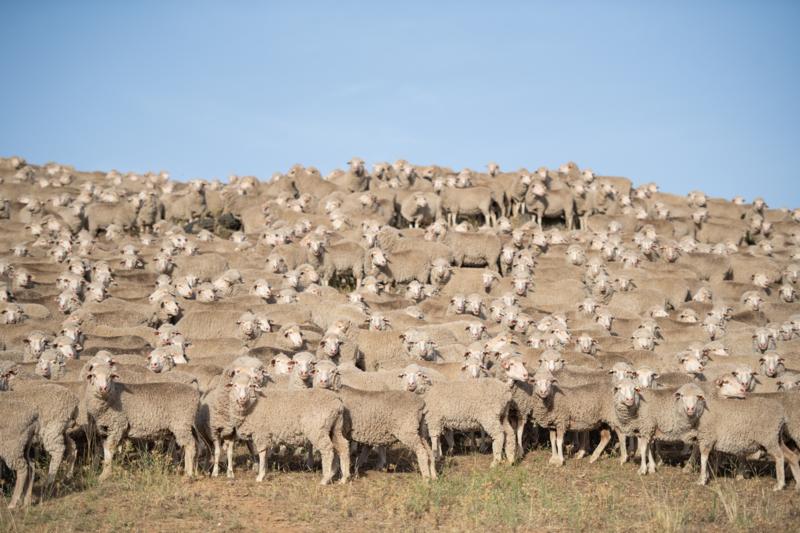 The SRS Merino ewes feed on perennial grasses, which offer them a balanced diet and parasite protection.
The SRS Merino ewes feed on perennial grasses, which offer them a balanced diet and parasite protection.
The Smiths are passionate advocates of sustainable farming and over the years have developed a grazing system that has regenerated the land and substantially improved productivity. Today the sustainability pioneers run a thriving operation.
The Smith clan has farmed this land for generations. “My great-grandfather and namesake Norman Harry Lester Smith came here in about 1898,” says Norm. “He bought the land from squatters and over 20 years, built up the original block of 800 acres [324 hectares] into about 9,000 acres. Then my grandfather and my father ran the place before I took over.”
After studying at Orange Agricultural College, Norm spent a few years jackarooing and working on cattle stations before marrying Pip in 1996 and taking control of Glenwood through a family succession.
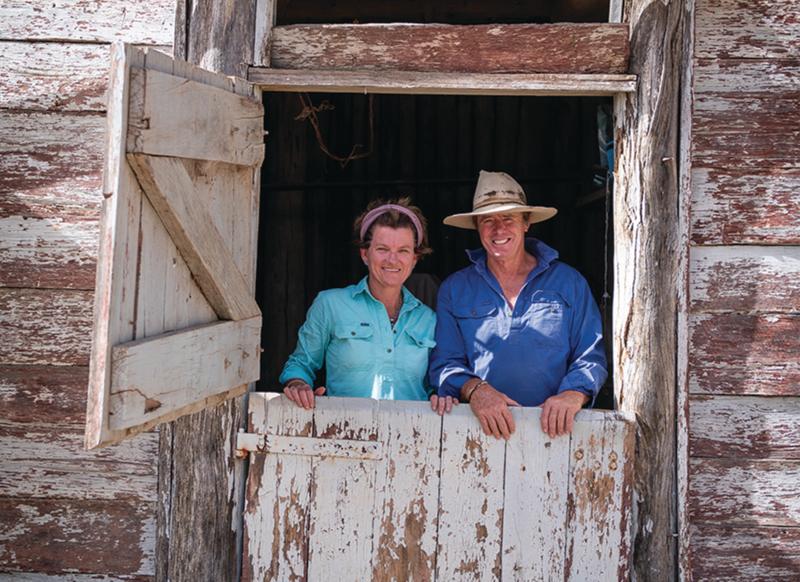 Pip and Norm Smith in an old stable on Glenwood.
Pip and Norm Smith in an old stable on Glenwood.
“The farm was carrying a lot of debt and one of the bigger costs was spreading superphosphate aerially,” Norm says. “We did a holistic farm management course in Dubbo and realised moving across to perennial grasses made a lot of sense with our asset base, as we already had quite a lot of native perennials alongside introduced species like cocksfoot and phalaris.”
Perennial grasses introduced to rejuvenate farm
Their initial impetus was to cut costs while maintaining productivity, with the ultimate aim of rejuvenating the property. The first step was to consolidate grazing – smaller paddocks, more of them, and time-controlled grazing.
RELATED:
Reaping the rewards of biodynamic farming
“We needed more paddocks, so we improved the fencing and looked at the water supply, putting in pipes that carry a larger volume of water, and new troughs,” Norm recalls.
“We knew we had to make an investment in water and were able to do that because we were no longer spending $100,000 a year spreading superphosphate.”
Norm put the cattle in with the commercial ewe flock, split them into four or five mobs and rotated them around the paddocks. He admits there was a lot of trial and error before he got the formula right. “We soon found out that putting young sheep together in one big mob straight after weaning wasn’t the best thing for productivity of the weaners. We had to compromise a bit with smaller mobs and build them up over time.”
However, once the grazing system was fine-tuned, the improvement in pasture was pronounced. The length of grazing in each paddock depends on the livestock and the season. With weaners, for example, the shorter the graze period, the more productive the grasses will be. So it’s a three-to-five-day graze period followed by 60 to 90 days rest. With wethers, Norm works on a similar graze period then 120-150 days of rest. The rest makes the pastures more resilient with up to 60 different grass species in each paddock.
Effective land managament pays dividends for livestock health
There was an unforeseen side effect of improving the ground cover. In hill country, Glenwood had traditionally relied on dams as a water resource, but increasing the perennials meant they weren’t getting the runoff as the soil was retaining the moisture more effectively. So Norm sunk a few bores to back up the water stock.
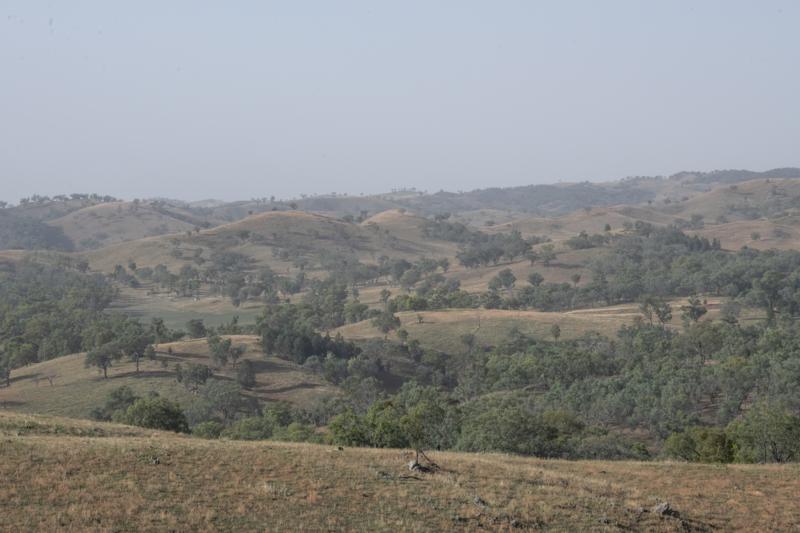 The hilly countryside around the Smith’s property.
The hilly countryside around the Smith’s property.
Glenwood is involved in a 15-year federal Environmental Stewardship Program where part of the property is maintained without fertilising or ploughing, and the growth is monitored annually for environmental outcomes such as diversity and density. The results are very encouraging.
“The ground cover has improved every year – we’ve gone from 80-90% cover to 100% year on year,” says Norm. “We’ve found the distance between the plants is shrinking, which means the perennial population is growing steadily. The diversity is also increasing. We’re seeing more successional-type perennial grasses, including microlaena, warrego grass and a number of different wallaby grasses.”
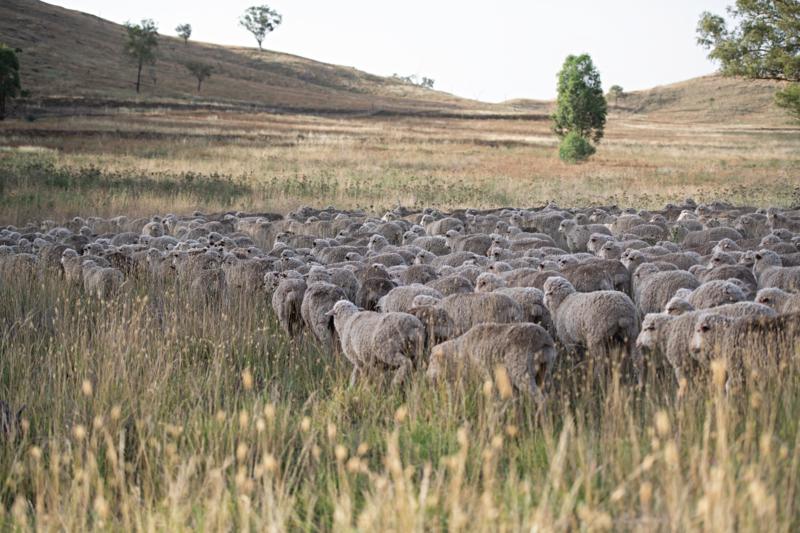 The long break from grazing makes the pastures more resilient, with up to 60 different grass species growing per paddock.
The long break from grazing makes the pastures more resilient, with up to 60 different grass species growing per paddock.
Another outcome of the profusion of species is a more balanced diet for Norm’s sheep – and one that protects them from many parasites – which means his wethers haven’t needed drenching for five years.
“It’s a big bonus,” he says. “The only time we really see our wethers now is when they come in for shearing or crutching. The short graze/long rest periods seem to break up the worm life cycle and the increased grass stock means the sheep are not eating right down to the ground where the worms live. It’s a combination of how they’re grazing and what they’re eating, for instance plants that are high in copper can help sheep resist barber’s pole worm, in particular.”
The ewes being mustered in for The Farmer photo shoot. Source: Love Merino Facebook.
Norm has also discovered that sowing the occasional crop can help rejuvenate a tired paddock and encourage more plant diversity. “If we sow oats, we just direct drill it in the paddocks and it seems to have a really positive effect, speeding up the regeneration of perennials over the next six-to-12 months.”
While not eliminating chemicals altogether, Norm no longer does any broadacre spraying. He still has to spot-spray problem weeds. “It’s important for us to keep on top of invasive weeds like St John’s wort and blackberry. But we have definitely minimised our chemical use.”
RELATED:
Farmers want a bigger say in weed management
Effective land management has paid dividends in terms of animal health and strength thanks to consistent nutrition throughout the year. Norm only brings supplementary feed in for his stud rams when necessary to present them for sale.
“We’re no longer going from really dry to really green so we’ve got time to adjust our stocking rate accordingly,” says Norm. “That said, last year was the toughest winter we’ve had to go through, although there are a lot of people worse off than us.”
SRS breeding principles leads to higher quality wool
As passionate as he is about perennial grasses, Norm sounds almost evangelical when he starts talking about his Merino plain-bodied sheep and the SRS genetic principles that underpin his wool growing. The controversial brainchild of veterinarian and former CSIRO scientist the late Dr Jim Watts, SRS breeding eliminated the signature Merino body wrinkle, producing what Norm believes is a more resilient and fertile sheep, one that can thrive equally well in wet or dry conditions, while producing better quality wool.
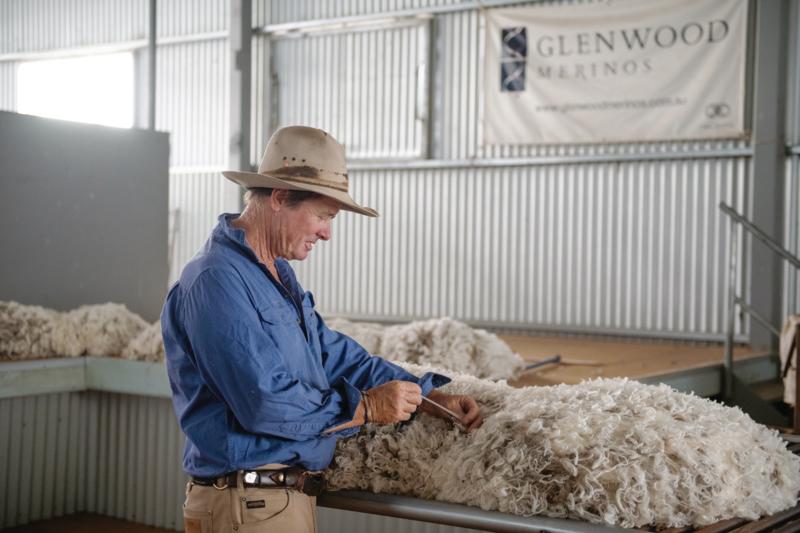 Norm inspects the quality of the wool in the shearing shed.
Norm inspects the quality of the wool in the shearing shed.
Without the wrinkly skin, the plain-bodied Merino also has a much lighter skin, which means better efficiencies in blood flow. “A wrinkly Merino skin can weigh up to 8kg, about 10% of its body weight, but the plain-bodied skin is only about 3kg. It’s one of the reasons they’re more fertile. A lot of the clients who buy our rams are achieving lambing percentages over 120% compared to the Australian average of 80%. That’s enormous when you’re dealing with the profitability of a single flock.”
RELATED ARTICLES ON WOOL:
-
Cashing in on the wool boom
-
Merino farmer bucks tradition
-
Wool prices are booming, so where are the shearers?
Glenwood began embryo transfers in 2017 and Norm reckons it’s a definite value-add. “We’ve done two programs so far, and it’s added a lot of depth to our breeding being able to utilise the top 12-to-15 ewes in the flock.”
The farm uses Australian Sheep Breeding Values (ASBVs) for a number of sheep traits. “We’re particularly focused on carcase traits, looking for early growth, positive muscling and fat, worm resistance, high-fibre density and length in the wool.”
“It’s a very easy-care sheep. Because they are far less susceptible to fly strike, there is no need for mulesing. As a non-mulesed flock, we access a completely different market.”
“That wrinkle in the skin traps moisture from rain or urine, which causes fleece rot that gives off the smell that attracts flies. Because they [plain-bodied sheep] are far less susceptible to fly strike, we haven’t mulesed since 2005.
“It’s also been great for us because it’s allowed us identify ourselves as a non-mulesed flock and access a completely different market.”
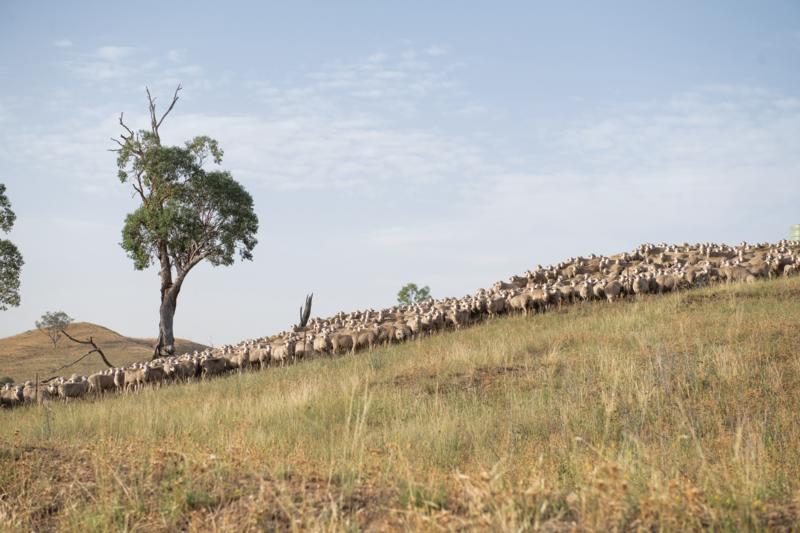 A non-mulesed Merino flock opens up a lot of markets for Glenwood.
A non-mulesed Merino flock opens up a lot of markets for Glenwood.
This new market is one that sets a premium on humane and sustainable wool production. In February 2018, the Smiths sold their first wool under the Responsible Wool Standard (RWS), developed by the Textile Exchange, an American-based non-profit organisation that promotes textile sustainability and best farming practices. Norm was one of the first Australian producers to sign up to the voluntary global standard.
“There’s no mulesing,” says Norm. “They look at how you manage your animals – muzzling of dogs, dehorning sheep, the way you do your lamb marking. We use pain relief now when we dock tails, which reduces stress and the lambs recover a lot quicker.”
Opening up a profitable premium wool market
Ethical is proving profitable. “We got a big premium for our wool – at the time it was 180c above market price, which was great. That’s the sort of thing we’d like to do more of. Ultimately we’d like to sell our wool directly to processors and not go to auction at all.”
Norm is adamant that ethical wool production is the way of the future and that Australia, which produces more than 90% of the world’s apparel fine wool, needs to get behind it or risk becoming irrelevant in a consumer-driven marketplace.
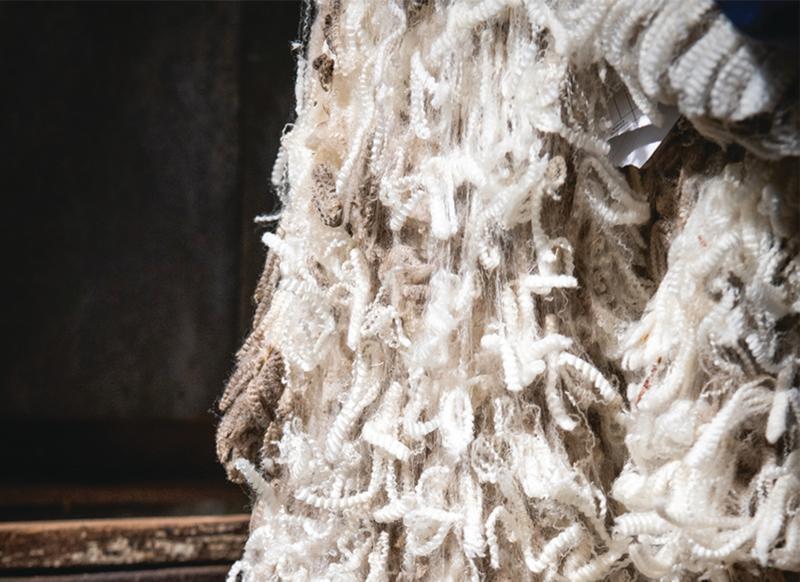 A close-up of the SRS wool.
A close-up of the SRS wool.
“At the moment, Australia’s got a huge advantage because of the story we can put behind us, the way we manage our land, the fantastic wool we’re growing. But the mulesing debate is having an effect on the way we’re viewed by our customers and Australia has to be there with New Zealand, South America and South Africa, supporting projects like RWS, or risk falling behind.”
While sustainability has now entered the wool industry mainstream, Norm admits his farm was probably viewed as being a bit “out-there” in the 1990s. “I’m not saying that our way is the right way –different farms have to work that out for themselves. We all have that opportunity to sell our story and our credentials as sustainable producers.
“Holistic farming principles gave us a financial framework and a grazing management plan, but it’s not a recipe because every farm has different people with different goals for what they want to produce.”